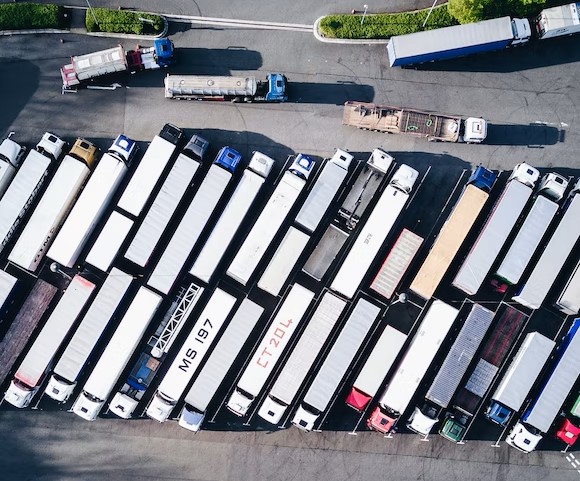Brussels has put it in black and white. From 2035 there will be no more production of endothermic engines. In the area of freight transport, the sale of new internal combustion commercial vans (ICEs) will also end in 2035. And, from 2040 that of new heavy goods vehicles.
Policy is setting goals for the green transition to achieve climate neutrality. But the choice of technologies to achieve these goals to save the planet is yet to be made.
The die is cast. In Europe, the digital sustainability breakthrough in energy-efficient freight transport will be disruptive, even if it is only one piece of the strategy to achieve zero emissions in the EU.
How to make the world of transportation sustainable still requires a lot of study, a lot of evaluation, a lot of thoughtful decisions. Here is what the market is offering us today.
Table of Contents
Freight transport today is not sustainable
The transport sector emits 30 percent of the total CO2 in Europe. Of which 72 percent can be attributed to road transport alone, according to the European Environment Agency (2019).
Although passenger vehicles hold as much as 60 percent of emissions, freight transport generates significant climate-changing gas emissions. With heavy commercial vehicles contributing 26 percent and light commercial vehicles close to 12 percent.
Moreover, as e-commerce has boomed during the pandemic, the need for sustainable logistics has become compelling.
The contribution to emissions generated by the freight sector is not to be underestimated. Even as giants such as Amazon are switching to electric in the last mile of delivery. The first 10,000 electric vans (of 100,000 ordered) will green up the U.S. giant’s fleet by 2022. While the entire van fleet will be converted to electric by 2030.
By 2030, to bring EU energy and climate policy in line with the Green Deal with “Fit for 55,” the European Union has set a target to cut transport emissions by 55 percent from 1990 levels. But by 2050, zero CO2 emissions from road freight transport are needed to achieve climate neutrality.
Freight transport decarbonization: benefits and drawbacks
The European Climate Foundation, in collaboration with Cambridge Econometrics and the Politecnico di Milano (in coordination with European Climate Foundation (ECF), Transport & Environment (T&E), Motus-E and Kyoto Club), has promoted a technical report.
The goal is to understand potential decarbonization modalities, advantages and criticalities from the perspective of vehicle costs, fuel costs, necessary infrastructure. And, the benefits of their adoption, in relation to CO2 emissions and other climate-changing gases.
The research shows that a rapid transition to zero-emission powertrains in the road freight fleet can produce significant decreases in CO2 emission. However, electrification of transport requires massive development of renewable energy.
The use of zero-emission vans and trucks requires the adoption of charging and refueling infrastructure to support the growing fleet of alternative propulsion vehicles. ERS-enabled or hydrogen fuel cell vehicles require more overall infrastructure investment than battery electric vehicles.
The three pillars of the European strategy for sustainable mobility
To make mobility sustainable, Cambridge Econometrics (EC) recommends saving traffic (Avoid), achieving a new modal rebalance (Shift) and betting on technological innovation (Improve).
These are the three pillars of the European Sustainable and Smart Mobility Strategy (“Sustainable and Smart Mobility Strategy”) to make EU mobility greener, resilient and digital.
To fully decarbonize freight transport in Europe by 2050, logistics operators must focus on:
- modal shift (shift);
- digitization;
- adoption of cargo bikes;
- adoption of sustainable logistics;
- hub-and-spoke models to ensure that vehicles are “right-sized” for specific purposes.
In addition, vehicle use must be made efficient (through technology and sustainable logistics). The proposal for zero-emission alternatives should accompany the “phase-out” of combustion engines. Which should be abandoned in favor of battery electric or hydrogen fuel cell.
Incentives aimed at the purchase of zero-emission vehicles by haulers (leasing or long-term rental) must, therefore, be adopted. Of crucial importance is the introduction of discounts on tolls (road and highway) for zero-emission freight vehicles.
In this regard, in the revision of the Directive, the European Parliament also guaranteed a 50 percent discount, to be increased to a maximum of 75 percent, on road charges for zero-emission trucks by 2023. The revision of road tolls in Europe would be a significant incentive for zero-emission trucks.
An European strategy is also needed to place a limit on the movement of the most obsolete vehicles, starting in urban and metropolitan areas. So as to lower the impact of these vehicles and hit the target of zero-emission vehicles by 2050.
Read also: What is “micro-mobility”, the future of transportation in cities












